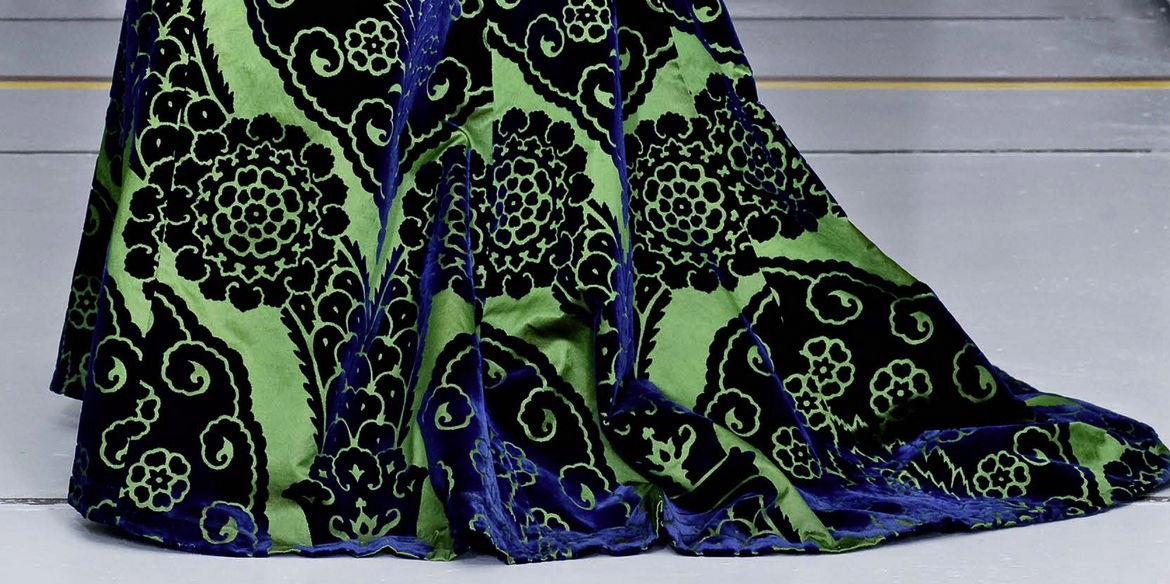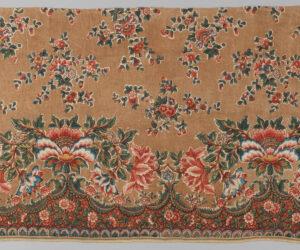
A Love letter to a House of Worth Victorian Tea-Gown – 1897
If you follow me on Twitter, you’ve probably noticed a proliferation of frippery. I started my #ThreadTalks a few weeks ago to sort of give me some brain overflow space for all the research for dresses. The novel I finished recently, Netherford Hall (which is essentially a queer re-imagining of Pride & Prejudice à la Bridgerton), required a lot of research in this direction (okay, so that’s not super surprising for anyone who’s ever read a single thing I’ve written).
At any rate, in Netherford Hall, our heroine Poppy Ellsworth at one point procures some chintz fabric with which she designs and then co-creates a gown for her sister Viola. Of course, I went into a research fugue for a few lines of text–but then I shared it on Twitter, and it turns out folks were really interested.
TL;DR, you can come to Twitter at 8PM on Mondays, and I’ll be going through the history of fabrics in the same manner. I’ve got an archive over here, as well, in case you missed it.
Now, I’m also a totally maniac for 1880s and 1890s gowns. Between the silhouettes, the bustles, the colorways, and the integration of what had been typically “masculine” lines (like lapels and jackets and even tails). I’d seen this dress before, and last night as I was heading to bed, I shared one of my favorite gowns of all time that honestly seems too beautiful to be real.
Judging by the reactions, you felt the same way. So, I thought I’d do some reverse Google image searching to find out what it might be.
Of course, it was House of Worth. And it of course, it’s even more stunning than those pictures initially demonstrated.
It is a tea-gown, which was meant for a very specific purpose: tea was an absolute occasion (even if it was pretty frequent), and generally it was the height of friend #squad time. So tea-gowns became à la mode. Even though this dress is gobsmackingly gorgeous, it’s really so extra I can’t stand it. It dates from 1897.
The dress is currently at the Pallais Galliera in Paris, France. It was owned by the Countess Greffulhe who was, quite frankly, some goals. Known as the “queen of salons” she helped inspire a generation of artists. I mean, just this snippet alone:
The countess helped establish the art of James Whistler, and she actively promoted such artists as Auguste Rodin, Antonio de La Gandara and Gustave Moreau. Gabriel Fauré dedicated to her his Pavane, which received its first full performance, with the optional chorus, at a garden party she held in the Bois de Boulogne. She was a patron of Sergei Diaghilev‘s Ballets Russes, and launched a fashion for greyhound racing. Fascinated by science, she helped Marie Curie to finance the creation of the Institute of Radium, and Édouard Branly to pursue his research on radio transmission and telemechanical systems.
The dress is taffeta, and that’s where the joy for me really comes in. What you didn’t see in the original picture is because of taffeta’s remarkable qualities, that incredible green actually shimmers a violet blue as it moves. Gonna zoom in on that a bit:

Like. My heart stopped. STOPPED. The overlaid design looks like a kind of damask (which will be my topic next week) but it’s actually cut velvet on lace. That shot silk taffeta is what looks like this walked out of a novel about evil Fae queens who want to drink your soul, and I am very here for it. More images here. From what I’ve read, the green was specifically chosen to highlight the countess’s naturally auburn hair and deep purple eyes.
Was it poison? Green dyes are infamous for their deadly qualities. I don’t know if this was Scheele’s green, however judging by my cursory research but the 1870s, the poisonous qualities of the textile and its high quantities of arsenic were already clear. So it’s unlikely, but not impossible, that the countess might have had issues. However, it is very reasonable that earlier in the century, my Netherford Hall darlings might have cause for concern in 1814.
Images: Tea-gown, Worth copyright Eric Emo / Paris Musées, Palais Galliera





